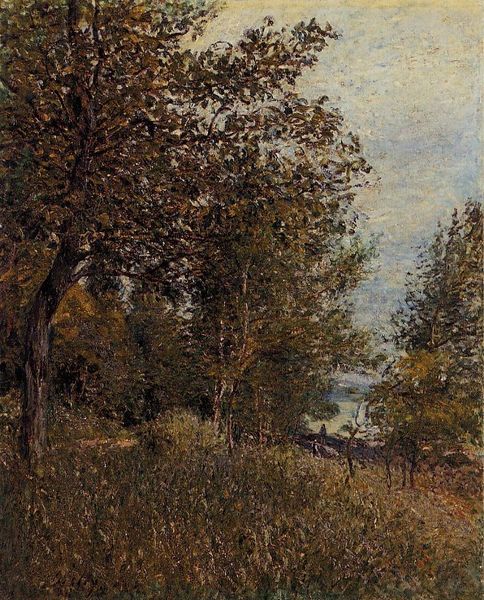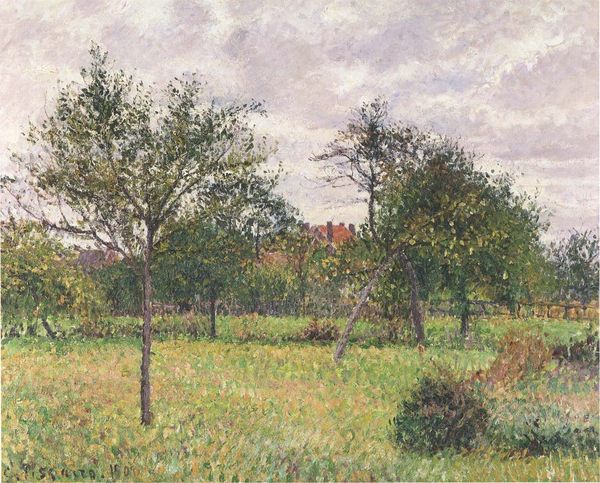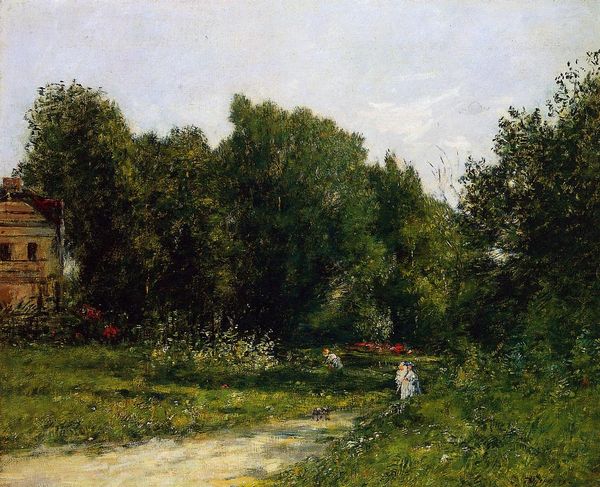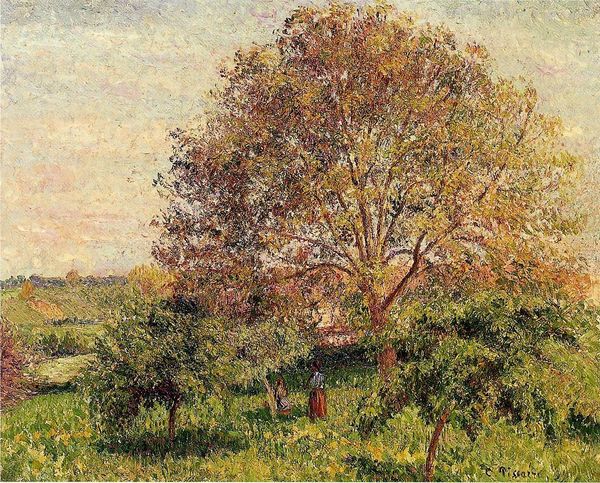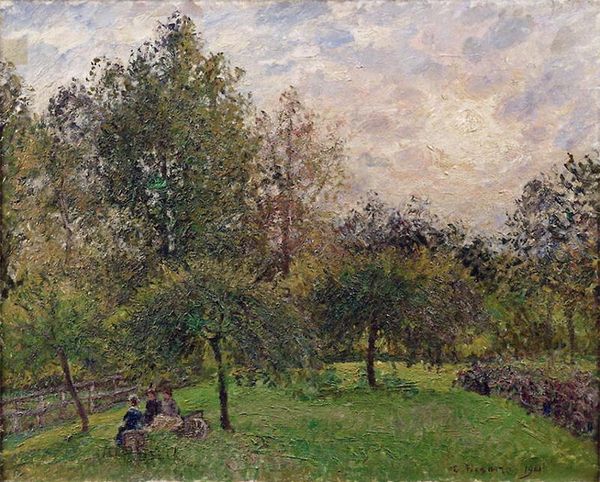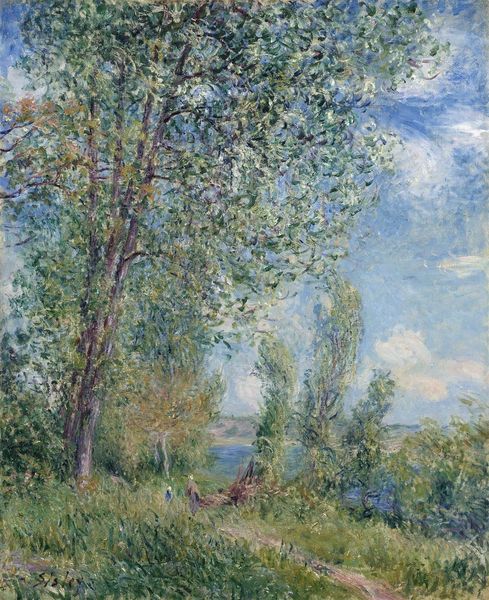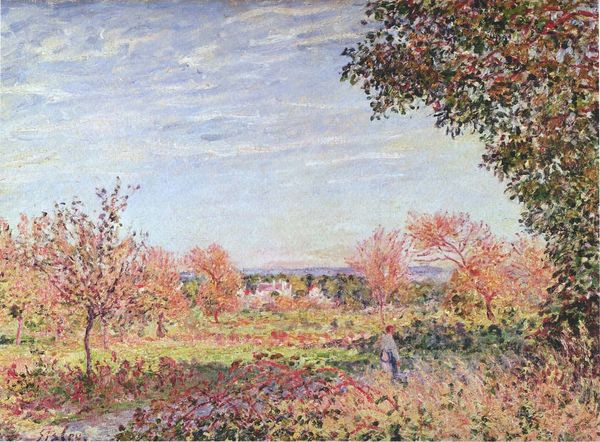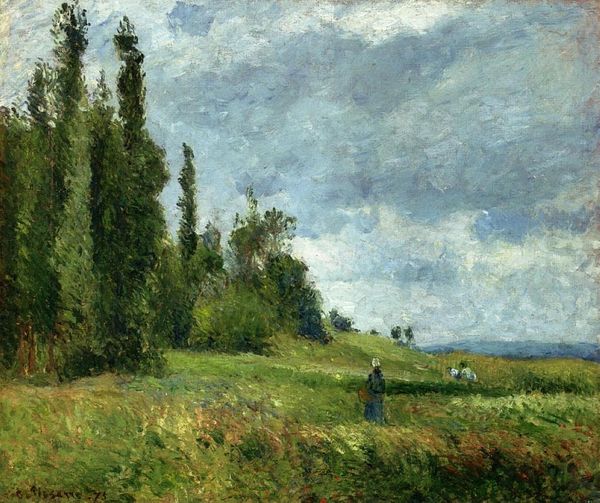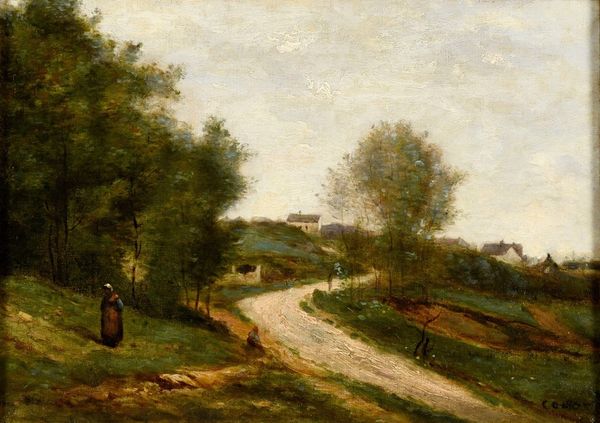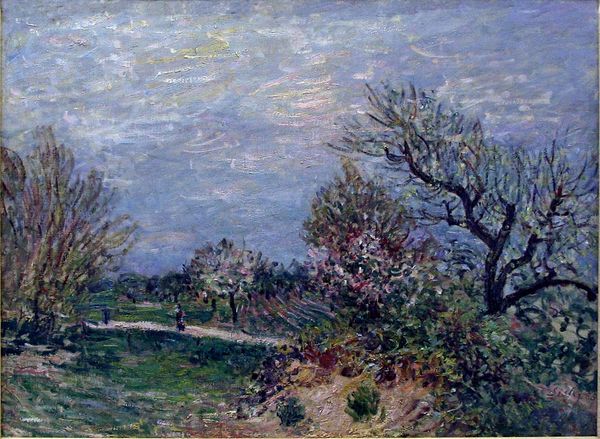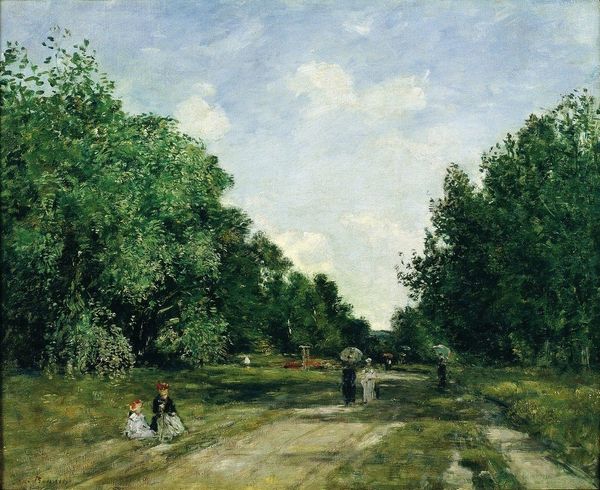
plein-air, oil-paint
#
impressionism
#
plein-air
#
oil-paint
#
landscape
#
oil painting
#
genre-painting
Dimensions: 46 x 55 cm
Copyright: Public domain
Curator: Welcome. Before us hangs Camille Pissarro's "Pontoise Landscape, Through the Fields," completed in 1879. Painted en plein air, it showcases the artist's dedication to capturing the essence of rural France. Editor: Immediately, I am drawn to the way the light filters through the leaves of that prominent tree, creating dappled shadows on the ground. It evokes such a calm, serene atmosphere. Almost palpable in its silence. Curator: Pissarro’s connection to the Impressionist movement is central here; his landscapes frequently explore peasant life. He sought to present a kind of unsentimental vision of labour in France’s fields. Consider this through a socio-political context: there’s an acknowledgement of the working classes, at a time when Paris was being aggressively modernized. Editor: I completely agree. The solitary figure walking along the path... she seems burdened, yet grounded, deeply connected to this land. Is this also about highlighting the dignity of the working class, particularly in contrast to urban bourgeois life? There's something very resonant about the choice of the path, literally a well-trodden ground for those laborers of Pontoise, not really celebrating, but pointing at realities for conversation. Curator: Yes, Pissarro engaged in leftist political thought. What's interesting to consider is the politics of visibility. Even amongst the impressionists, who were routinely censored from official exhibitions, paintings of rural workers or the urban poor still faced derision from critics of the time. And these artworks challenged social hierarchy. The countryside was frequently evoked as a locus for nostalgia, rather than for showing the material struggles happening there. Editor: It makes me consider the broader societal expectations of women and labor during this period. The way Pissarro portrays this woman isn't idealized; there is an honesty in her form. It pushes against dominant societal representations, a recognition of the ordinary labourer woman and an affirmation of her right to simply occupy that space, perhaps. Curator: Precisely. This type of quiet visual statement had real political repercussions. Editor: Looking closer, the loose brushstrokes and natural palette also feel like an invitation to appreciate the beauty and complexity of everyday life, and by implication a need to appreciate everyday workers’ experiences too. Something profoundly radical, for a moment of fleeting quiet observation, isn't it? Curator: It certainly leaves me contemplating the interplay between art, labor, and the enduring legacy of social commentary. Editor: It makes me reflect on how artists can use their craft to invite us to contemplate deeper truths, still relevant in the times we face today.
Comments
No comments
Be the first to comment and join the conversation on the ultimate creative platform.
